The BitFenix Pandora ATX Case Review
by E. Fylladitakis on August 11, 2016 9:00 AM EST- Posted in
- Cases/Cooling/PSUs
- bitfenix
- ATX
- Case
The Interior of the BitFenix Pandora ATX
The removal of the case’s panels reveals a relatively roomy but complex interior. BitFenix has sprayed the interior of the Pandora ATX with a matte black paint. The paint job is excellent but this particular paint is highly prone to fingermarks. Aside from the chassis and other metal parts of the case, everything inside the Pandora ATX is black, including the fans, the cables and every single screw and stand-off.
There is an opening on the motherboard tray for the installation of aftermarket CPU coolers, large enough to offer compatibility with most motherboards, yet not overly so as to expand beyond the limits of a Flex-ATX motherboard. Openings for the routing of cables can be seen to the right and below the motherboard area. Simple but effective rubber grommets cover these openings. There is another very large opening at the top right side of the system area, without a cover.
The installation of drives inside the Pandora ATX is being done on metallic trays found throughout the case. We found three 3.5” drive trays inside the bottom compartment near the front of the case, with two of them being at the bottom of the case and one at the top of the compartment. Another 3.5” drive tray is within the system area, right beneath the motherboard. The four 2.5” trays can be found to the front of the motherboard tray, two on either side of the case. It is interesting to note that the 2.5” trays inside the system area can be exchanged with 3.5” trays if the user wants to. 2.5” devices can also be installed on the 3.5” trays if needed.
The installation of the drives on the 3.5” trays is done by inserting rubber grommets on them and then securing the drive using the provided screws. As 2.5” drives do not really vibrate, BitFenix kept the 2.5” trays very simple and the drive is directly secured on the tray with typical screws.
Note that the 2.5” trays just look like they can take the device inside them - the 2.5” drive will not fit inside the tray, it is meant to be installed on it. BitFenix wants the drive to be visible when viewed from a windowed side panel.
The strange metallic mount at the bottom of the system area is a liquid cooling pump mount. BitFenix claims that it can hold every pump meant for a PC cooling setup available today. Even if a pump is not directly compatible, drilling an extra hole or two should be a cakewalk for a modder. A soft anti-vibration pad is installed on the mount to help reduce the possibility of vibration-induced noise from the pump. The concept is very interesting but the position of the mount can be problematic with a multi-GPU system, as it can block the installation of a card depending on its length and installation slot.
The top panel of the case can easily come off by simply pressing down on it. Here the user can install up to three 120 mm or two 140 mm fans and relatedly sized radiators. There is enough space between the top cover and the installation mounts for the vast majority of liquid cooling radiators available today, but we would not recommend some of the proprietary models that may be over 40 mm thick. A metallic brace can also be noticed and it is meant to serve as a mounting point for liquid cooling reservoirs, allowing the user to essentially hang them right in front of the motherboard.
Up to three 120 mm or two 140 mm fans and relatedly sized radiators can also fit at the front of the BitFenix Pandora ATX. Access is gained by carefully pulling the faceplate off, as the cable attached to the front LCD can be easily damaged. One 140 mm fan with a fluid dynamic bearing engine has been installed at front of the case from the factory.
The PSU compartment is roomy, allowing PSUs up to 240 mm in length to be installed. There is a hole right above the PSU leading directly to the system area, but the intended path for the cables is alongside the edge of the motherboard, where BitFenix installed three long cable straps. Cable tie mounting points can be seen all across the rear of the motherboard tray.
For the means of this review, we installed a Corsair AX760i with the red cable set, for strong visual contrast. The AX760i easily fits inside the BitFenix Pandora ATX, with more than enough room for managing the cables. Most of the cables will probably be amassed across the side of the motherboard’s tray, secured by the straps. They may create a rather thick bundle but the Pandora ATX has a clearance of 23.5 mm between the chassis and the side panel, which should prove to be more than enough. We do feel that the cable management straps should be a little to the side as they force the cables to go over the openings and they are amassed too close to the 2.5” drive trays, but this is not a major issue, only a practical nuisance.
The ATX system fits inside the system area of the Pandora ATX like a glove, allowing the installation of large air coolers, liquid coolers and long/wide graphics cards. The space in front of the motherboard, allowing cards up to 440 mm long to the installed, but it can be seen that the presence of a pump on the intended mount would most likely block the installation of our second card. The CPU cooler’s maximum height is 160 mm and will create compatibility problems with many top-tier air coolers, hinting that this case has been primarily designed with liquid cooling in mind.


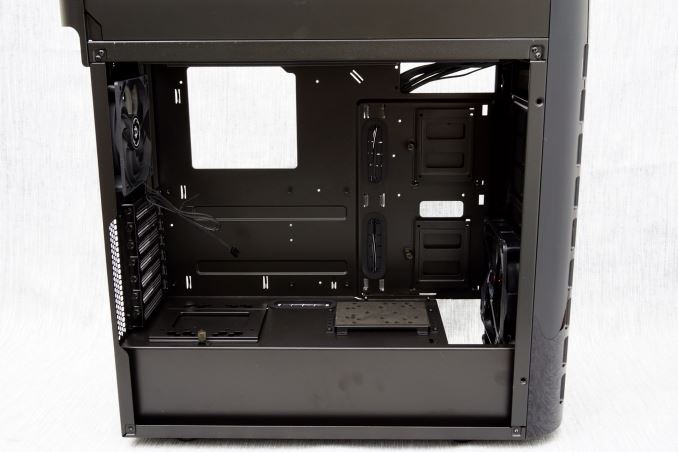
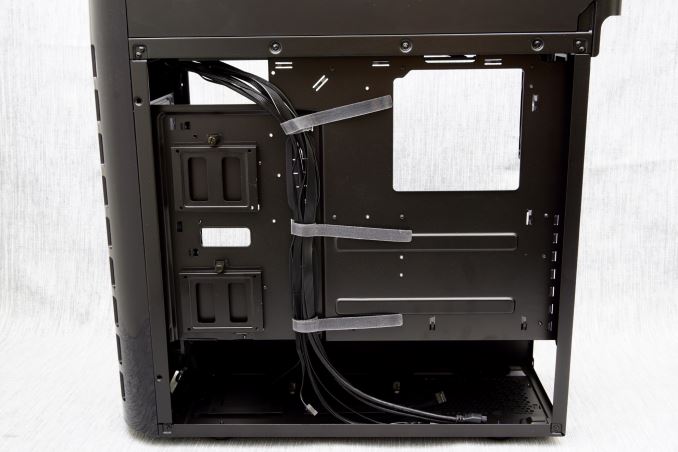
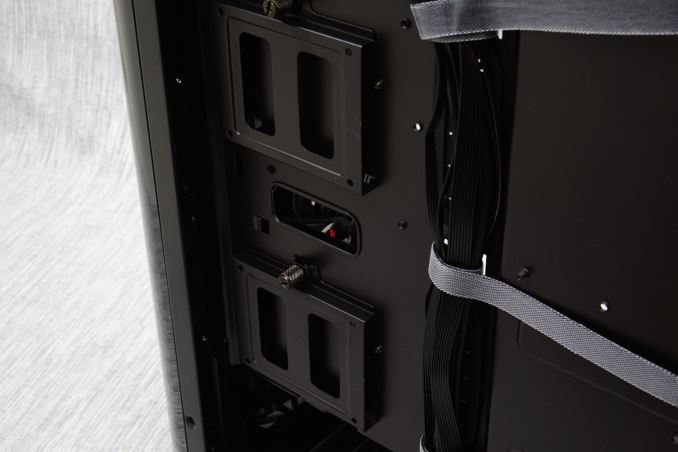
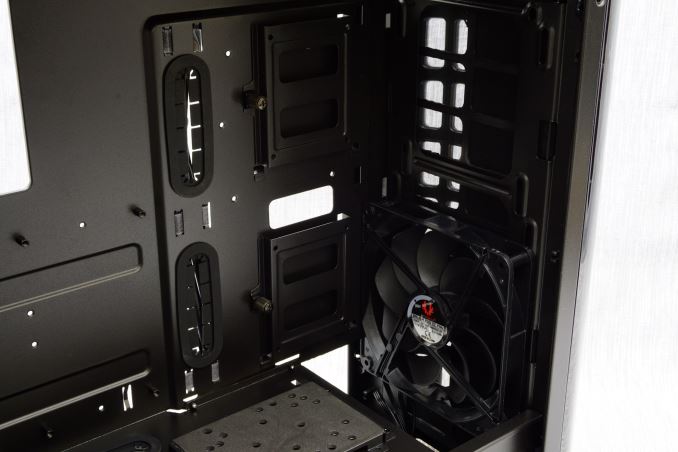
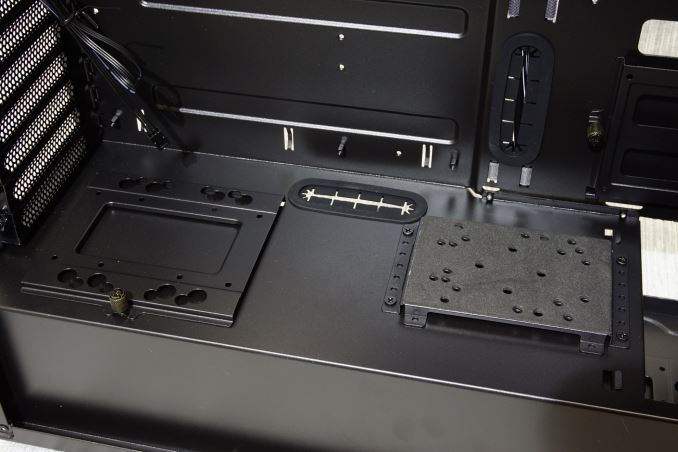
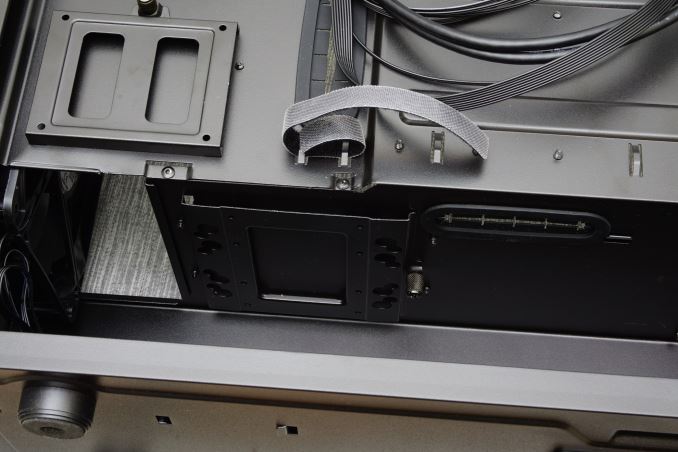
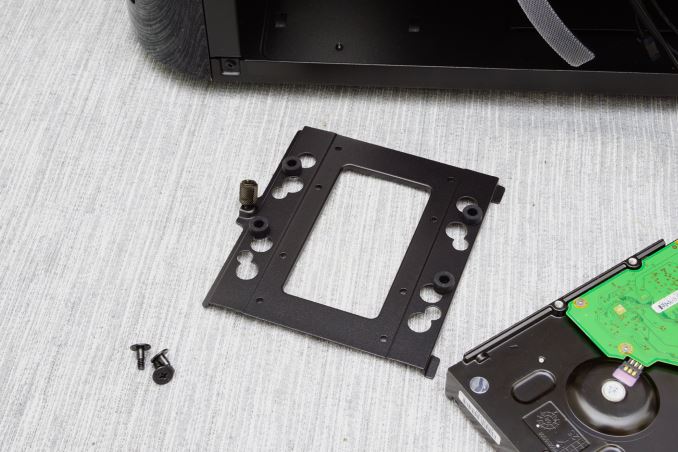
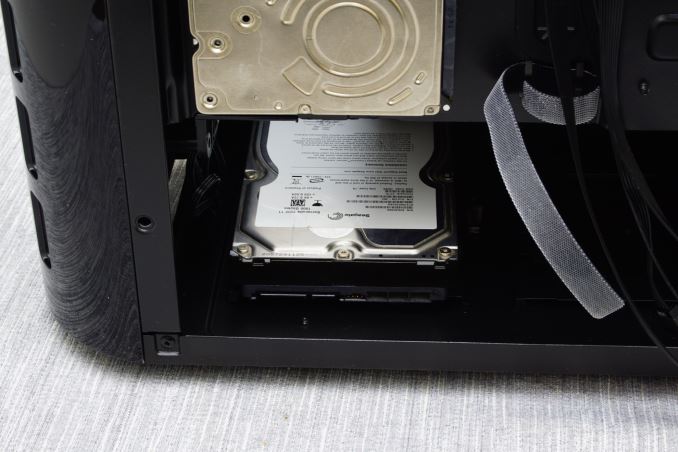
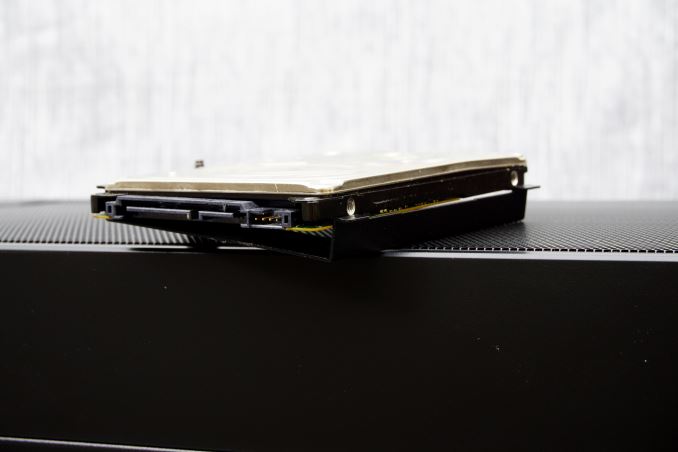
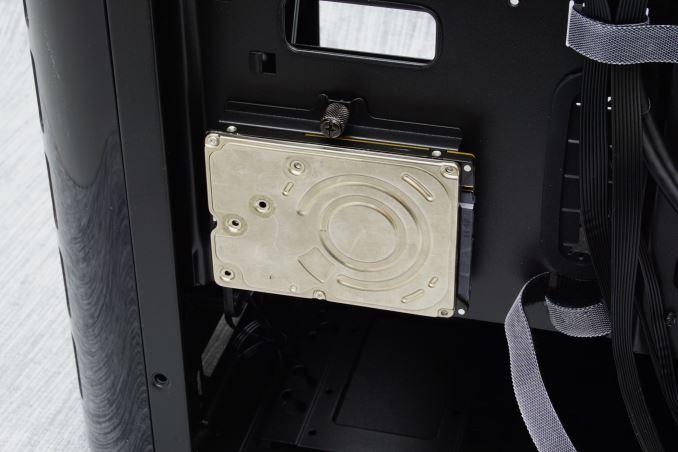
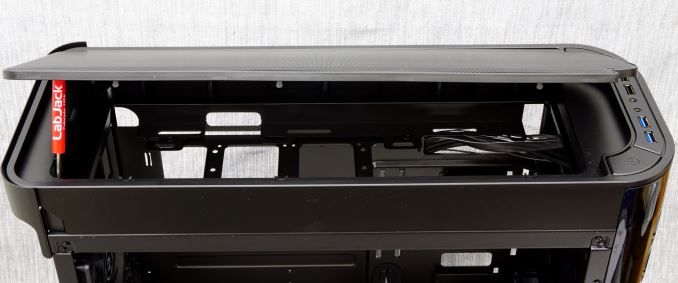
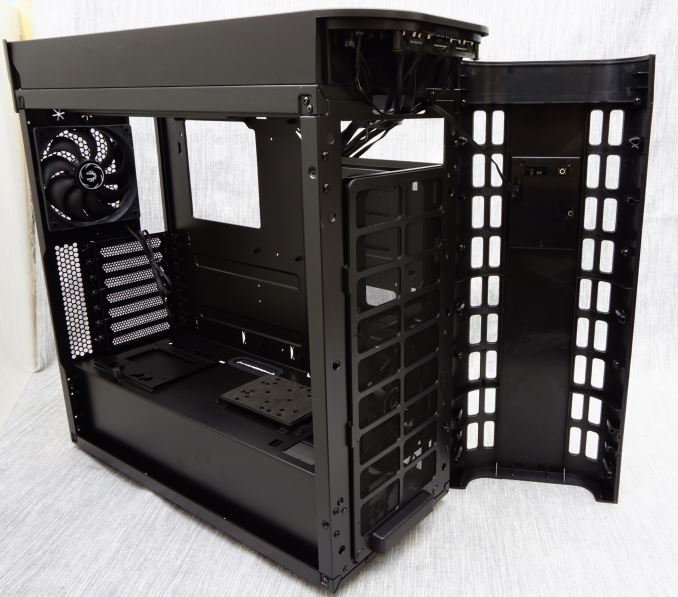
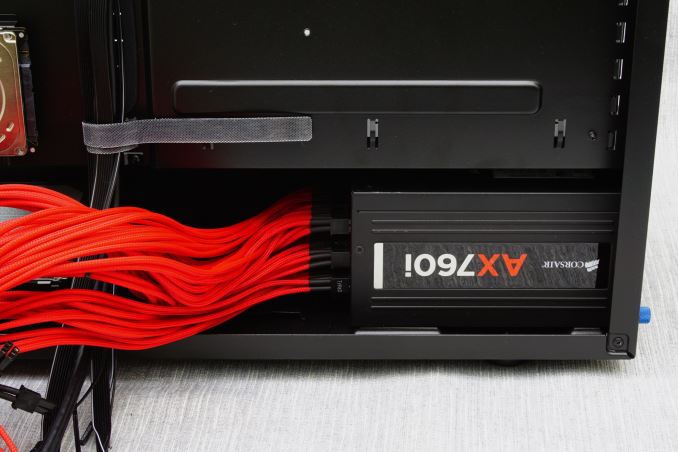
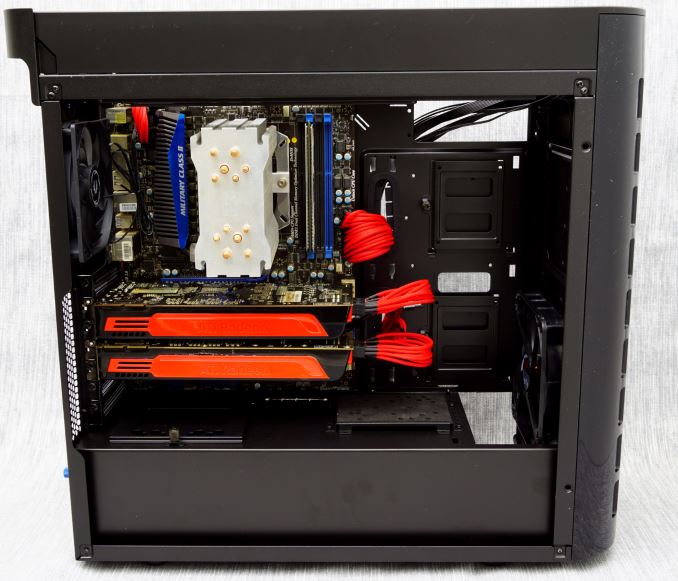
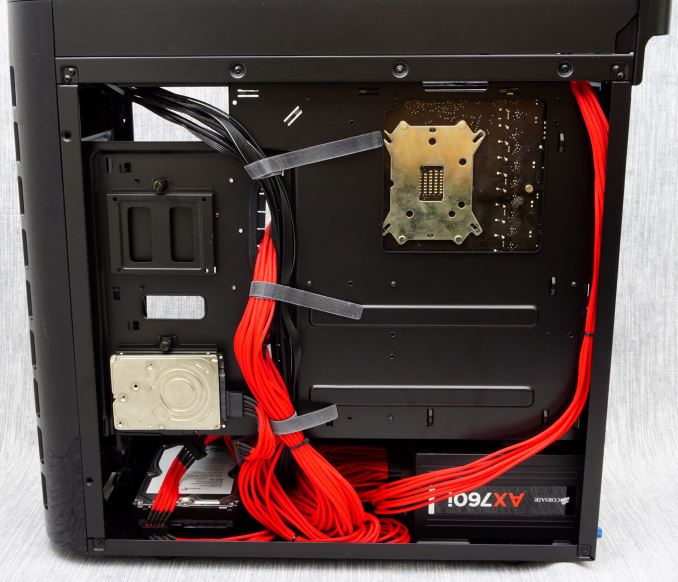








26 Comments
View All Comments
SimonJM - Friday, August 12, 2016 - link
The display would've looked better if it was OLED. The non-black background of the screen doesn't blend so well with the black case.Jackattak - Friday, August 12, 2016 - link
A reset button? In 2016? Seriously?HomeworldFound - Friday, August 12, 2016 - link
Yes, Many cases still have one of those. If you've tried feature games from the Windows 10 Store you'll be so happy to own one.pedjache - Saturday, August 13, 2016 - link
You seriously need a reset.pauliem30 - Sunday, August 14, 2016 - link
I just got this case the other day to do a review on. I'm very excited to do the build in it!ES_Revenge - Tuesday, August 16, 2016 - link
I have an original [mATX] Pandora. While I like the case, I always wondered why the thing is so tall for an mATX case that doesn't really seem like it needs to be as tall as it is. It seems as though they could have just made it slightly taller and allowed an ODD somehow (which I know no one cares about anymore but at the time it still sort of made sense). Even if they could have incorporated a slot and allowed a vertical slim/slot ODD it would have been cool.Well now it seems they have just gone ahead and made the case even taller, but to fit a full ATX motherboard instead. I dunno I don't see the point. There's lots of competent mATX boards out there these days and have been for quite some time. Vast majority of ppl I see with full ATX boards these days have like one or two slots used and then 5-6 ones sitting there doing nothing. ATX just seems passe these days. There's even mATX cases that support SLI and mATX cases that have a "fifth slot" opening (which the original Pandora itself has), in case you have your second GPU slot at the end of the board. With all that the Pandora full ATX seems a bit pointless.
Personally I didn't get the one with the display at the time because it was ~$50 more and it didn't seem worth it because the display is not capable of much. Fast forward a few years and it seems functionality hasn't improved at all. Basically just still a static display with little use. I know they released the source code or whatever so ppl could do whatever with it, but it seems like no one has. I always used to think a cool application would be to display album art, which would automatically change with whatever track you were listening to. Surely they could have a plug-in for programs like MediaMonkey, etc. which could accomplish this. Instead it seems the use of the display is still very limited and all they bothered to do was make the case bigger. The display has even made it on to cases like the Aegis but again other than it's appearance and $30-50 premium over the "core" case without it, it's not really something of that much use. Looks cool for a day and then you forget about it.